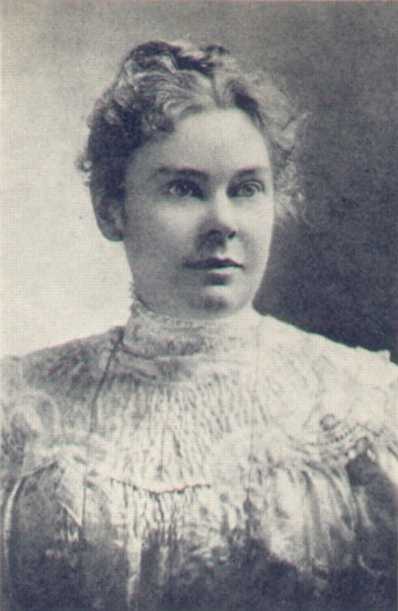
With the possible exception of the presumed murder of the "Two Princes in the Tower," no double murder has been more celebrated in song, verse and literature than the killing of Andrew Jackson Borden and his wife Abby Borden. Although Lizzie Borden was charged with the killing of her father and step-mother, she was acquitted. While it has been frequently speculated that the jury was simply unable to believe that a young woman (Borden was 32, and considered a "spinster" in the terminology of the era) with a devout Christian upbringing could commit a double murder, especially one so brutal as the killing of the Bordens.
However, within legal circles, the consensus is that the prosecution simply did not have sufficient evidence to convince the jury of Lizzie's guilt beyond a reasonable doubt. Criminal forensic science was in its infancy in the late 19th Century and without an eyewitness, it was often difficult to establish a clear connection between the suspect with a presumed motion to commit the crime and the crime itself.
Lizze Borden's trial took place in New Bedford starting on June 5, 1893. Prosecuting attorneys were Hosea M. Knowlton and future United States Supreme Court Justice William H. Moody; defending were Andrew V. Jennings, Melvin O. Adams, and former Massachusetts governor George D. Robinson.
Five days before the trial's commencement, on June 1, another axe murder occurred in Fall River. This time the victim was Bertha Manchester, who was found hacked to death in her kitchen. The similarities between the Manchester and Bordens' murders were striking and noted by jurors. What was not known at the time was that Jose Correa de Mello, a Portuguese immigrant, who was later convicted of Manchester's murder in 1894, was determined not to have been in the vicinity of Fall River at the time of the Borden murders.
One difficulty with the prosecution's case was that no murder weapon was recovered. While a several hatchets and a hatchet head had been found in the basement, there was conflicting testimony as to whether a handle for the separate head had been found also. Although none of the the hatchet heads could not conclusively be shown to match the weapon or weapons used to kill the Bordens, police theorized that the separate head had been used to commit the murders and the handle was subsequently removed and burned because it contained bloodstains. However, no trace of blood or other evidence of the hatchet being used in the murders was found and the prosecution could not explain why the killer would have destroyed the handle, rather than disposing of the weapon intact..
Another problem with the case was creating a timeline for the murders that matched known facts. Andrew Borden left the house at 9am for his customary morning walk and returned around 10:30. the prosecution's theory was that during his absence, Lizzie killed her stepmother in an upstairs guestroom.
The Borden's maid, Maggie Sullivan, testified that she had to open the front door to the home for Andrew Borden because his key would not unlock the door and that while at doing so she heard Lizzie laughing from upstairs, where Abby's body would have been plainly visible if the door of the guestroom were open. Sullivan further testified that she last saw Andrew Borden alive just before 11am in the sitting room with Lizzie.
Lizzie, however, maintained that she had been in the barn near the house for 20 to 30 minutes before 11am. Two independent witnesses saw Lizzie leave the barn just after 11am. Sullivan testified that at 11:10, Lizzie called to her from downstairs, saying "Maggie, come quick! Father's dead. Somebody came in and killed him."
While there is no question that Abby Borden was killed before her husband, the prosecution's theory was that Borden had killed her shortly after Andrew Borden left and remained upstairs with the body until 10:30. However, there was no evidence that Lizzie was agitated or that any telltale signs of the killing were on her clothing, despite that prosecution asserting that Borden later burned her dress to destroy blo0dstains. Police were criticized for their haphazard investigation during which they failed to examine Lizzie's clothing for evidence of blood or tissue.
Although the prosecution made much of Sullivan's testimony that she had heard Borden upstairs at 10:30, Sullivan also was upstairs and reported seeing nothing amiss. The prosecution argued that Borden closed the door to the guestroom before going downstairs although doors of the bedrooms were usually left open when unoccupied to aid in ventilation.
Police stated that under interrogation Lizzie gave conflicting statements and seemed unusually calm. It has been speculated, however, that she may have been in a state of shock. Similarly when called to testify at the inquest, Lizzie was taking morphine under a prescription and this likely effected both her demeanor and the clarity of her testimony.
The presiding Associate Justice, Justin Dewey (who had been appointed by Robinson, the defense attorney, when he was governor), delivered a lengthy summary that supported the defense as his charge to the jury before it was sent to deliberate on June 20, 1893.[After an hour and a half of deliberation, the jury acquitted Borden of the murders.
Although acquitted at trial, Borden remains the prime suspect in her father's and stepmother's murders. Nonetheless, many of speculated on other possible suspects including Sullivan, Emma Borden (Lizzie's sister) -- whose alibi was never verified -- John Morse, the brother of Andrew Borden's first wife who was staying with the family and who gave police an "absurdly perfect and overdetailed alibi for the death of Abby Borden."
 RSS Feed
RSS Feed